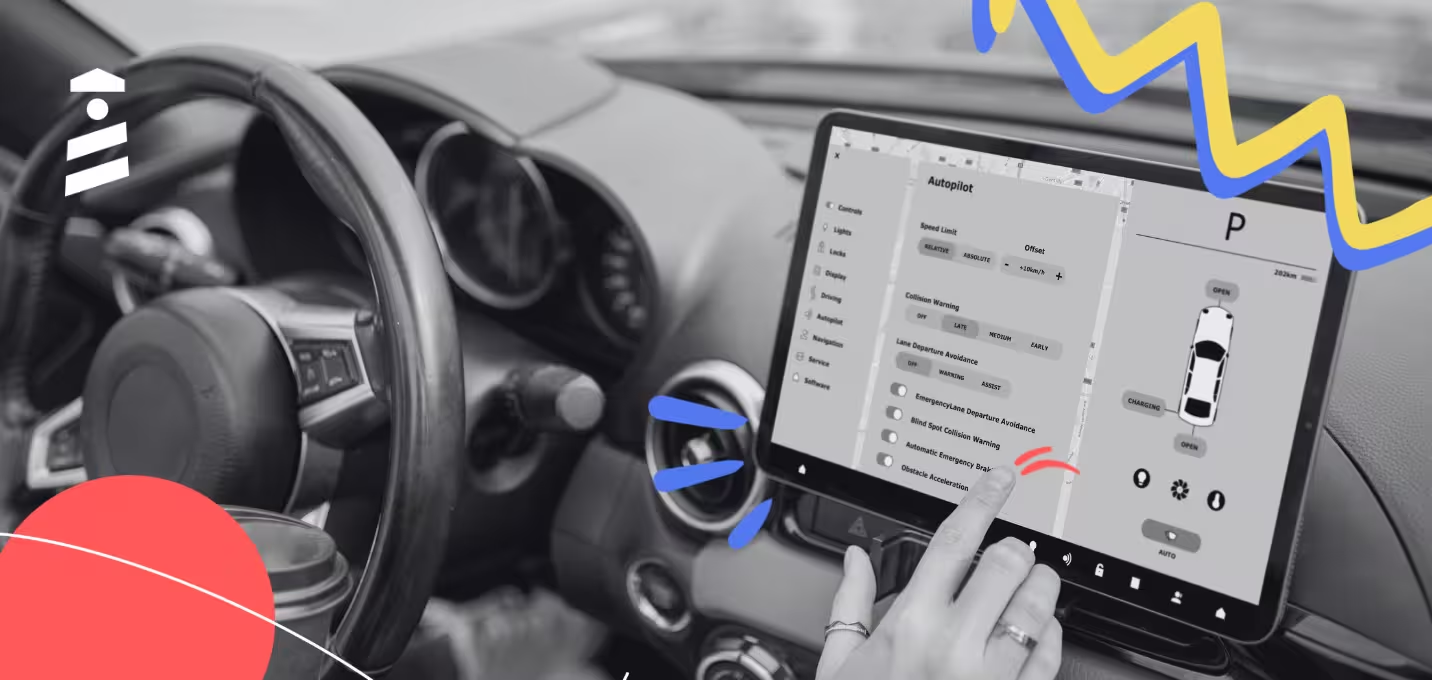

Frigade is a cool tool for handy developers and designers.
But is it right for you?
With a whole set of great functions for the code-savvy, Frigade might not be the ultimate weapon for no-code enthusiasts.
And today, we are diving into the best products to replace it for you.
Don’t have the time, check out the TLD;DR ⬇️
TL;DR
- UserGuiding: All-around no-code product adoption platform for optimized user experiences at an affordable price.
- Appcues: Ideal for mid-market businesses, offering easy-to-use onboarding and engagement features for non-technical teams at a similar price to Frigade.
- WalkMe: Best for enterprise-level companies looking for extensive employee onboarding and productivity tools at a premium cost.
- Usetiful: Budget-friendly option with a straightforward use case, suitable for small to medium-sized businesses.
- Shepherd Pro: Customizable and low-cost solution for developers focusing on basic onboarding flows.
What Frigade Does Well
Frigade is a brand-new tool launched in 2022, and it has quite a few good reviews on Product Hunt.
What makes it a fan favorite? The top 3 reasons are:
1- Accessible customization thanks to flexible APIs
Frigade combines drag-and-drop UI with different APIs to make coding more accessible for its main audience, devs.
With APIs available nearly everywhere on the platform, coding and, thus, higher customization become much more accessible to users.
This makes Frigade a great tool for developer teams working on onboarding flows.
2- Good integration options for its size
Though it is a fairly new product, Frigade offers 10+ integrations among which are Amplitude, Slack, and HubSpot.
While the free plan does not offer integrations, and the Growth plan offers 1 integration, the set of tools is pretty good once you get a custom quote.
As much as the tool has some obvious advantages, there are some drawbacks too.
Drawbacks of Frigade
Still in its main development stage, Frigade offers a solid solution though with a few cons that can put off those with specific needs.
1- Limited features & analytics
Frigade mainly positions itself as a growth platform for software teams, but its main capabilities generally encompass user onboarding.
The tool has onboarding checklists, product tours, and other onboarding UX elements but lacks more intricate features like in-app surveys beyond NPS, hotspots, resource centers, and knowledge bases.
Moreover, though Frigade offers pretty good analytics for a tool of its capacity, the analytics features aren’t available in the free version.
2- Hard to navigate and implement
Since it is primarily a developer-facing tool, Frigade is both hard to set up and implement for non-tech-savvy users.
The tool's onboarding requires some coding skills to install the SDK on your app, and the installation of the elements also depends primarily on coding.
So, though the tool can be used without coding, it also offers coding options around every corner, which might be confusing for non-technical users.
3- Too expensive for what it offers
Frigade is a “fresh” tool, and naturally, its capabilities are minimal.
Though these capabilities are available to use for different use cases like user onboarding and feature adoption, the features are still limited.
When this is the case, the pricing, which starts at $300/month, gets to be counter-effective.
Now, if these are dealbreakers for you, it’s time to look for alternatives.
Here are the top picks for you ⬇️
5 Best Frigade Alternatives
- UserGuiding - all-around product adoption with better use cases & affordable pricing
- Appcues - user guidance for mid-market
- WalkMe - better for enterprise-level employee onboarding
- Usetiful - same feature set with better pricing
- Shepherd Pro - free open library with analytics
1- UserGuiding - the all-around solution with better use cases
- G2 ⭐️ 4.7/5 (391 reviews)
- Capterra ⭐4.7/5 (51 reviews)

UserGuiding is a product adoption platform tailored to the needs of product teams looking to create experiences that convert and retain users.
Among UserGuiding’s main advantages are its no-code ease of use and setup, its high functionality in different areas of need for product teams, and cost-effective performance.
The tool is also among industry leaders and is renowned for stellar customer support.
UserGuiding Use Cases
UserGuiding boasts a good set of use cases, the top 3 being:
User Onboarding and Feature Adoption
Having started off as a user onboarding tool, UserGuiding offers powerful features and capabilities for product and feature adoption.

Elements like onboarding checklists and interactive guides enable **higher personalization, gamification,** and segmentation.
This then makes UserGuiding formidable for better onboarding sequences.
Knowledge Base and Self-Service
UserGuiding also features Knowledge Base capabilities that fuel self-service, which is one of the primary elements of any product-led business.

The Knowledge Base feature provides you with a space where your users can handle issues on their own, without your customer support team getting involved.
This feature is supported by the Resource Center feature that gives users access to help materials and Knowledge Base, onboarding guides, and more within your product.
Using these elements, UserGuiding essentially offers lower support costs and higher retention and satisfaction.
User Engagement and In-App Messaging
UserGuiding offers onboarding elements like tooltips, hotspots, and models that drastically ease in-app user engagement and communication.
However, it doesn’t stop there.
UserGuiding uses user segmentation, targeting and scheduling to individually engage each user which can allow you to create segments that target users at risk or champions.
In terms of in-app messaging, UserGuiding announcement modals work great for different occasions, but more importantly, the tool’s changelog feature makes the main difference.

With Product Updates, users get to check out what you’re working on without leaving the app, or on the standalone page, whichever they prefer.
This contributes to higher engagement, higher feature adoption, and, consequently, higher retention.
Pricing
UserGuiding’s pricing plans are based on the number of active users you have. When billed yearly:
- Starter Plan: Starting from $174/month.
- Growth Plan: Starting from $349/month.
- Enterprise Plan: Custom quote.
UserGuiding vs. Frigade
In comparing the two tools, the most significant detail is that they are essentially made for two different user types: UserGuiding works best for product managers, while Frigade is for developers and designers.
This difference affects the UI, ease of use, workflows, and use cases for each.
With Frigade a developer can customize an onboarding flow greatly, meanwhile with UserGuiding a PM can create an onboarding flow, feedback loops, and a knowledge base with ease.
There is also the matter of pricing, which is quite pricey for Frigade, even though the tool is pretty simplistic in its use cases and feature set.
The decision then boils down to whether you want to have your devs design a user onboarding flow for $300/month or give your PM the tools to elevate all in-app experiences for $174/month.
Can’t decide?
Get your hands on it.
👉 Try UserGuiding for free today 👈
2- Appcues - user guidance for mid-marke
- G2 ⭐️ 4.6/5 (307 reviews)
- Capterra ⭐4.8/5 (102 reviews)
Appcues is among the long-running pioneers of the no-code approach in SaaS, and it is a capable tool for user onboarding and training.

The tool positions itself as a product adoption tool, and it is among the advanced options that can be considered for the job.
Appcues is especially a favorite in mid-market, but among its users are startups and enterprises as well.
Appcues Use Cases
Appcues lists a few use cases on its website, and the most important of these are:
User onboarding and feature adoption
Coming from a user onboarding background similar to UserGuiding, Appcues offers smooth onboarding elements and good analytics to keep an eye on the user journey.
The tool’s user guides, hotspots, checklists, and banners contribute greatly to this use case.
Surveys and announcements
As mentioned on the website, Appcues also includes in-app surveys and feedback forms, which greatly contribute to the NPS & Surveys use case.
Moreover, Appcues uses different types of tooltips and modals for its announcements use case.
These combined can help potential users with user engagement and better user interactions.
Mobile adoption
Though not a common quality among DAP solutions, Appcues also offers mobile adoption capabilities for those looking to onboard on mobile.
This use case is naturally not as sophisticated as Appcues’ regular onboarding solutions. However, it is a pretty good option for those using multiple operating systems.
Pricing
Appcues offers a free trial, and after more fixed pricing for a long time, it now offers adjustable MAU ranges as well.
>2500 MAU
- Essential: $249/month
- Growth: $879/month
5K+ MAU
- Essential: $399/month
- Growth: $1149/month
10K+ MAU
- Essential: $499/month
- Growth: $1289/month
Appcues vs. Frigade
One look at Frigade reveals to the educated eye that its smooth design and set of features are very much inspired by Appcues.
However, Appcues being the muse here, it is years ahead of Frigade in terms of features, design, and integrations, but, weirdly enough, not pricing.
Though Appcues has a bigger set of features and integrations and a solid market presence, Frigade is 17% more expensive than Appcues, with a $51 difference.
However, we would need to recognize the tools’ target audiences and use cases as well.
Frigade is for more technical people, while Appcues was founded to ease it for non-technical people by using no-code.
So, if you’re willing to pay more for a more technical product that your devs will use primarily, you need to go with Frigade. But if you want to pay a little less for your non-technical team, Appcues is a better option.
3- WalkMe - better for enterprise-level employee onboarding
- G2 ⭐️ 4.5/5 (427 reviews)
- Capterra ⭐4.4/5 (62 reviews)
WalkMe is another leading digital adoption platform vastly preferred by enterprise-level companies. It is a pretty advanced tool with a wide array of features, different use cases, and pricing to match.

For those looking for an employee onboarding solution, it has great value, and especially with the right budget, WalkMe works perfectly.
WalkMe Use Cases
WalkMe use cases mostly revolve around increasing productivity for its end-users, and the main use cases are:
Onboarding and employee training
Features like walk-throughs, smart tips, and task lists power WalkMe’s onboarding use case for both your customers and your employees.
The task list feature, in particular, makes employee training more structured and powerful since it functions as a checklist that can be used beyond onboarding.
Product analytics
Though some main analytics capabilities, like A/B testing, aren’t in the feature roster, WalkMe offers different advantages. A powerful solution WalkMe offers is product analytics, which lets you gather insights from your product.
This makes WalkMe especially helpful for user experiences since it lets you peek at the overall user behavior within your product.
Productivity optimization
WalkMe’s features, like shoutouts, search, and automation tools, specifically aim to improve employee productivity and higher engagement.
Though WalkMe offers these features to be used in a specific way, you can also use them for user engagement and onboarding processes as well.
Pricing
WalkMe does not offer public pricing, but users share that the company prefers annual contracts, which often exceed several thousand.
WalkMe vs. Frigade
In comparing Frigade with WalkMe, we can first say that there is a huge gap in pricing, though Frigade itself is among the pricier options in this article.
There is also a very obvious user and end-user difference.
WalkMe is a product for enterprise-level sales and HR teams to use in employee training. Meanwhile, Frigade is for developers and designers to create simple user onboarding flows.
WalkMe can clearly be used for the same reasons, but though it is a very complex tool, it doesn’t offer as many customization options.
So for those with the right budget looking for a solution for high-level employee training, WalkMe is the alternative to Frigade.
4- Usetiful - same feature set with better pricing
- G2 ⭐️ 4.7/5 (161 reviews)
- Capterra ⭐4.8/5 (8 reviews)
Usetiful is another DAP solution that is noteworthy thanks to its very simple use cases and affordable pricing matching what it offers.

The tool is similar to Frigade in design and feature set, though not as customizable and coding-friendly as Frigade is. Still, it is a great alternative if you are looking to start off with your onboarding initiatives without much hassle.
A unique quality that distinguishes Usetiful from the rest of this list is its knowledge base feature; similar to UserGuiding, Usetiful also promotes self-service among its use cases.
Usetiful Use Cases
Usetiful categorizes its solution into different teams the tool can help, but their use cases essentially boil down to:
User and employee onboarding
Usetiful offers the usual onboarding features, including product tours, checklists, and tooltips, which work for both user and employee onboarding.
Being no-code like UserGuiding and Appcues, this use case might be more useful to non-technical teams more than Frigade’s onboarding use case.
Self-service
With its knowledge base feature, which only UserGuiding offers on the rest of the list, Usetiful reinforces a self-service use case as well.
This use case is especially a great asset in reducing support tickets and increasing satisfaction.
Pricing
Usetiful has a free plan and when you’re ready to upgrade, its MAU ranges are semi-adjustable:
>2500 MAU
Plus: $29/month
Premium: $69/month
Enterprise: Custom quote
5K+ MAU
Premium: $69/month
Enterprise: Custom quote
10K+ MAU
Premium: $139/month
Enterprise: Custom quote
Usetiful vs. Frigade
The primary comparison point between Usetiful and Frigade is ease of use.
Unless you are a tech-savvy person and/or you are looking for a solution for your devs, Frigade might be too technical. Meanwhile, if you are looking for a technical product, Usetiful might come off as frigid.
The pricing is also a huge factor here, as Frigade is more expensive than Usetiful’s highest fixed pricing.
Looking at the feature set, though Frigade has all the essential user onboarding elements and features, Usetiful also offers a knowledge base feature, which is a whole other use case.
So, if you need a no-code product for your new onboarding initiatives on a tight budget, Usetiful is the alternative you need.
5- Shepherd Pro - free open source with analytics
Shepherd Pro is a tool based on the open-source library Shepherd.js. It has been a fan favorite for those looking for high customization and low prices.

Shepherd.js had that advantage because it was a code library and completely free, but now, with Shepherd Pro, users can also get analytics and integrations.
Shepherd Pro Use Cases
Shepherd is a pretty simple tool with a simple task: creating a good, functioning onboarding flow.
That makes the main and, for the most part, the only use case user onboarding.
This use case is supported with basic analytics so that you have a better understanding of how your onboarding flows perform, and a whole lot of customization options.
Shepherd Pro can also be added to your product with ease, using React, Angular, Ember, Vue.js, ES Modules and of course, Javascript.
Pricing
The Shepherd.js option is still up on GitHub for free, but you can use Shepherd Pro for free as well.
When you feel you need to upgrade, you need to get a custom quote for your specific needs.
Shepherd Pro vs. Frigade
Shepherd’s main advantage against Frigade is its pricing.
Though the pricing for Shepherd is custom, it is way below Frigade’s starting price of $300.
In a field dominated mostly by no-code tools, Frigade is unique for its high customization. But tools like Shepherd offer that too, though in a less structured way.
In this sense, the tools are pretty similar in what they offer; it’s only the intensity and level of advancement that differs.
If you are looking to code a user onboarding flow with ease and in a well-designed product, Frigade might still be what you need. If you are looking to code a user onboarding flow with a tight budget, Shepherd is the one.
Wrapping Up: Choosing the Right Tool
The pros of a product can be cons for one, the cons might be pros for another. What matters at the end of the day is what you and your product needs.
Frigade is ideal for devs who need high customization, but its limited features cost a pretty penny.
What’s the alternative here?
For a more user-friendly, no-code experience, UserGuiding offers comprehensive onboarding and feature adoption tools at an affordable price.
Appcues is ideal for mid-market businesses, providing robust onboarding and engagement features for a similar pricing.
WalkMe works best for enterprise-level companies, focusing on employee onboarding and productivity with extensive features at a premium cost.
Usetiful is a budget-friendly option with a simple interface, perfect for small to medium-sized businesses.
Shepherd Pro offers a customizable, low-cost solution for developers looking for basic yet effective onboarding flows.
And the decision you need to make boils down to your team’s skills, the features you need, and your budget. Now it’s onto you.
Good luck in advance 🍀

















.svg)
.svg)
.svg)
.svg)
.svg)

.svg)
.svg)












.svg)
.svg)




.png)

















